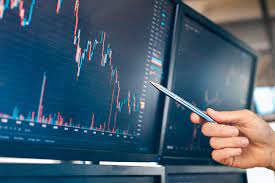
Breaking Down CFD Trading: How It Works
CFD trading, or Contract for Difference trading, is a popular financial instrument that’s gaining traction among traders worldwide. Despite its growing fame, many new investors find it somewhat complex. If you’re curious about how CFDs trading works and whether it’s the right path for you, this guide will explain everything in a simple and straightforward way.
What is CFD Trading?
At its core, cfds trading involves speculating on the price movements of financial assets like stocks, commodities, indices, or cryptocurrencies—without actually owning the underlying asset. A CFD is essentially a contract between a trader and a broker. The contract states that one party will pay the difference in an asset’s value from the time the contract is opened to the time it’s closed.
Here’s the kicker—you can profit whether the market moves up or down. You simply “go long” (buy) if you think the price will rise or “go short” (sell) if you predict the price will fall.
How Does it Work?
1. The Initial Position
When you enter a CFD trade, you’re agreeing to exchange the price of a financial asset at two points—when you open and when you close the trade. For example, if you’re trading gold and its price begins at $1,800 per ounce, you might predict it will increase. You then “buy” a CFD at that price.
2. Margins and Leverage
One of the most appealing aspects of CFD trading is the use of leverage. This means you can open a position for just a fraction of the total trade value, known as the margin. For instance, with a 10% margin, entering a $1,000 trade only requires $100 upfront. However, while leverage magnifies your profits, it also amplifies your losses—so handle it with caution.
3. Market Movement and Payouts
If your prediction is correct, the broker pays you the difference between the opening and closing prices. Using the gold example above, if the price rises to $1,850 per ounce and you close the trade, you earn a profit based on that $50 increase. But if the price falls to $1,750, you incur a loss on the same difference.
4. Transaction Costs
It’s essential to keep an eye on transaction costs like spreads (the difference between buying and selling prices) and overnight fees if you hold your position for multiple days. These can cut into your profits, so plan your trades carefully.
Why is CFD Trading Trending?
CFD trading is trending largely because of its flexibility and accessibility. Traders have access to a wide range of markets and can trade globally 24/7. The ability to profit in both rising and falling markets appeals to those seeking more opportunities than traditional stock trading offers. Additionally, platforms have made CFD trading more approachable than ever, offering educational tools and demo accounts to help beginners get started.
Final Thoughts
CFD trading is an exciting and versatile way to dip into the financial markets. Its unique benefits, like leveraging and the chance to profit in both bullish and bearish environments, make it enticing for modern-day traders. However, this potential comes with risks—leverage and market volatility demand disciplined strategies and risk management.
Proudly powered by WordPress. Theme by Infigo Software.